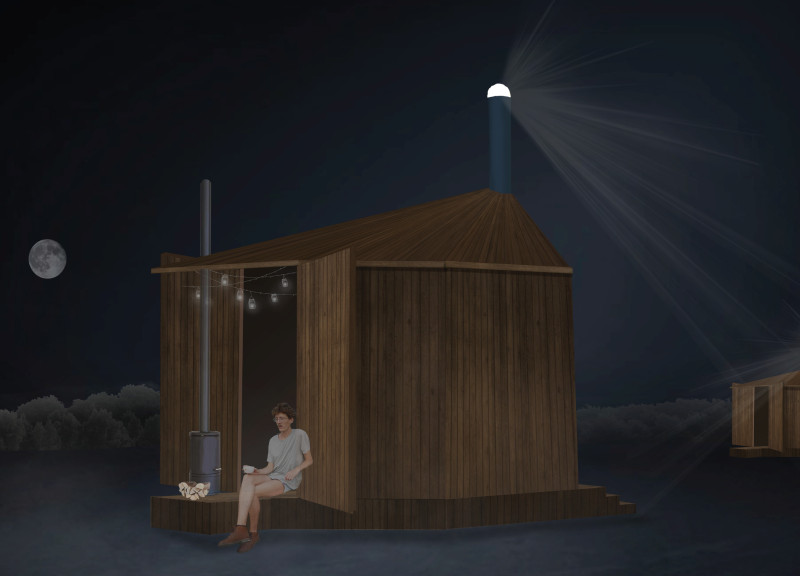5 key facts about this project
Located in the fishing village of Pavilosta, the design serves as a creative space for poets while honoring the area's maritime history. The overall concept revolves around arranging individual huts like boats anchored in a port. This layout creates a peaceful environment for reflection and artistic work and fosters community through shared spaces among residents.
Architecture Concept
The design balances private and communal areas, allowing poets to connect with nature while encouraging collaboration. The huts are placed intentionally to provide quiet space for individual creativity. In contrast, common areas are designed for social interaction, creating a lively atmosphere where ideas can flow and be exchanged.
Structural Features
One of the notable elements is the main mast or pillar within each hut, which provides structural support. This feature is not purely aesthetic; it carries the roof's weight while functioning as a night-time navigational signal. This dual purpose emphasizes both the practicality and symbolism of the structure, linking architecture to its maritime context.
Materiality
Timber plays a significant role in the project, reflecting traditional building methods from the region. Each hut is crafted from treated wood, ensuring longevity while showcasing local craftsmanship. This choice of material ties the project to its historical roots and promotes sustainable practices, aligning with environmental considerations.
Design Details
The blue timber pillars found in the spaces between huts serve multiple functions. They act as supports for various activities, including displaying poems or hanging laundry. These elements enhance connections to maritime culture and add to the visual coherence of the design, creating an environment that feels inspiring and supportive for both individuals and the community as a whole.



























